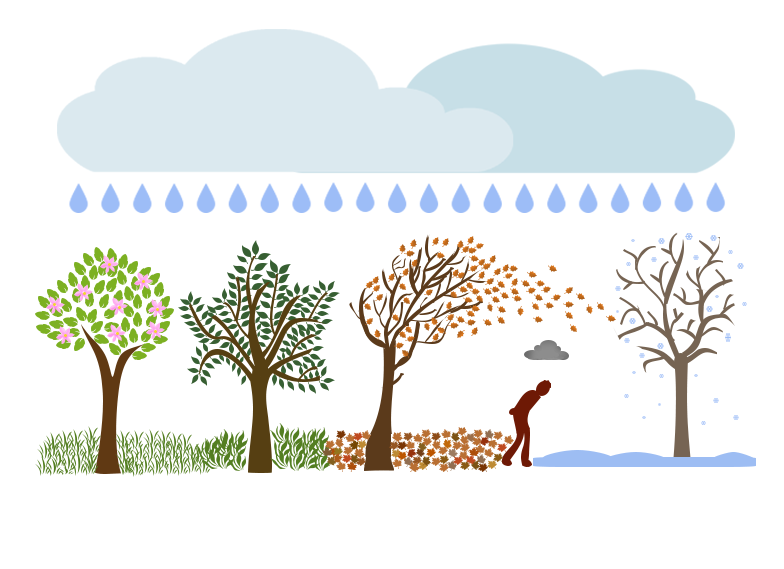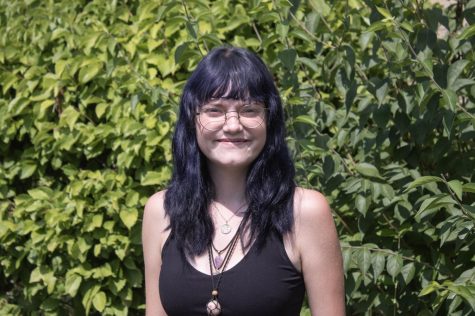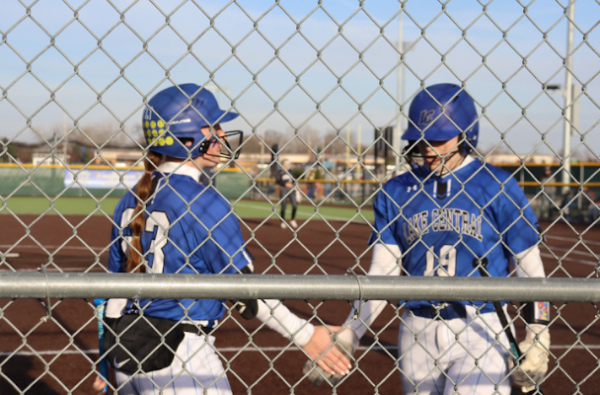The Winter Blues
A person is seen walking through trees that symbolize the months; in the image he is just starting to go through winter. This image was meant to show that they are upset going through the winter and fall months, shown through the cloud above their head.
September 18, 2020
Seasonal Affective disorder (also known as seasonal depression) occurs in the winter and fall months when there are less sunlight hours.
“Seasonal depression is when the weather starts to change, it gets colder, the sun’s not out as much and people are not getting enough vitamin D,” Mrs. Jamie Rodgers, Counselor, said.
Since daylight is decreasing, seasonal depression time is right around the corner. Seasonal depression has many names, but the meaning of the phrase never changes. It can be harmful to younger generations, as well as people with already existing mental health conditions.
“It causes sadness and tiredness, and it’s that feeling that you really don’t want to get out of bed or do anything,” Rodgers said.
The common symptoms of seasonal depression are fatigue, hopelessness, social withdrawal and insomnia. There are other symptoms that can help one identify seasonal depression.
“It’s a real thing; I see it in some of my coworkers. They really struggle in the winter and all other seasons they’re fine,” Rodgers said.
So how does seasonal depression affect students? With the lack of motivation seasonal depression causes, students might not be getting their work done on time or at all.
“I’ve seen grades drop. It’s especially hard around the holidays when someone has suffered a family loss. I see that people go into a shell. They’re not as motivated to learn and not as motivated to get good grades. Sometimes we see more suicidal thoughts. I would just say people overall struggle to get through that time period. They struggle to come to school and struggle to get work done,” Rodgers said.
According to Rodgers, for many people seasonal depression clears up after fall and winter, once spring comes and everything starts blooming and there’s more sunlight hours. So how does one cope with seasonal depression and lessen the effects of it? There are treatments one can do: phototherapy (light therapy) as well as talk therapy. One can also have medications prescribed.
“It’s easy to go into a shell and not do anything, but really, in my opinion, I think you have to find something to push you through that time. First of all recognizing that it is seasonal depression is important because once you know what you’re dealing with it makes it easier. Force yourself to get out of bed, force yourself to go out with your friends and have a good time. Sometimes it’s good just to get fresh air,” Rodgers said.
If you’re suffering from seasonal depression seek help. Call a local hotline or confide in someone you trust. You can also consult your doctor and see about therapy.
National help hotline:1-800-662-HELP (4357).











